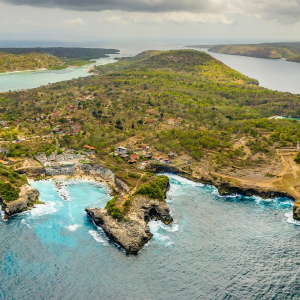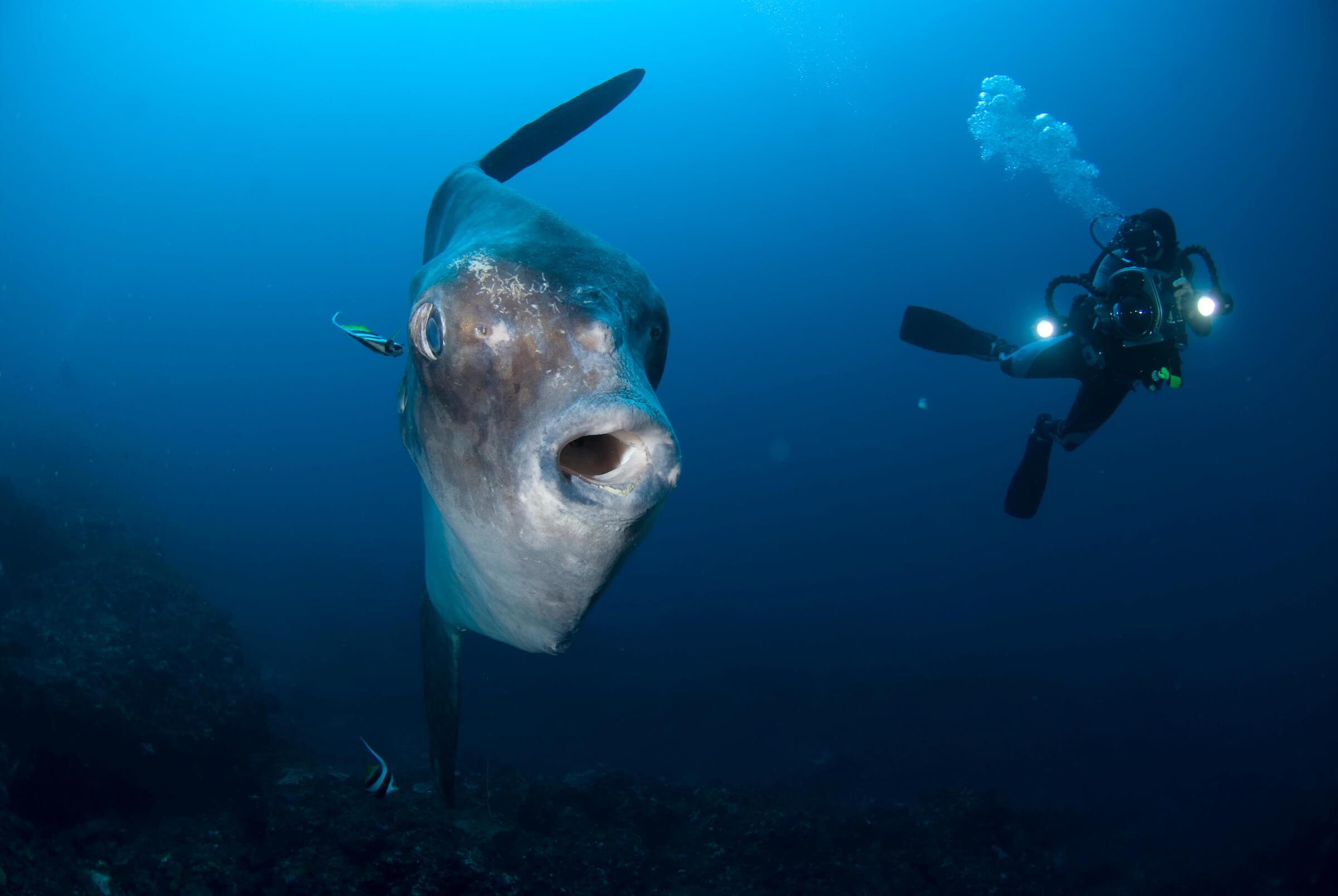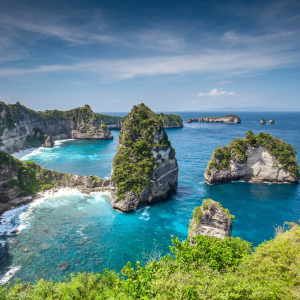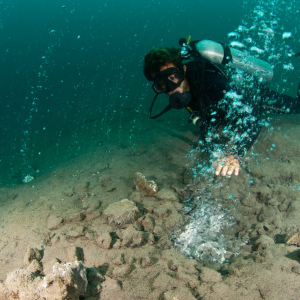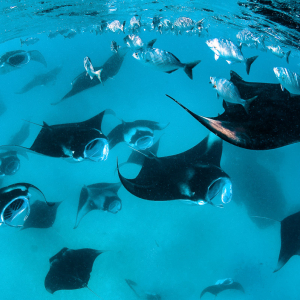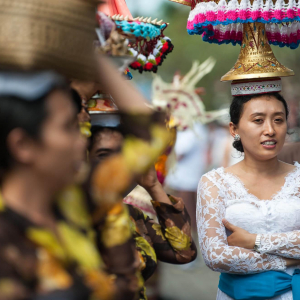Run by Marianne Nyegaard from Murdoch University in Western Australia, and Jennifer Han Karmy in Bali, the Indonesian part of the research programme includes population genetics, satellite tracking and the citizen science projects that assess sunfish seasonality - The Mola Log - and identify individual sunfish based on their skin patterns - The Bali Sunfish Photo Identification Catalogue. The research aims to expand our understanding of the Bali sunfish phenomenon and to enable better decisions for sustainable management of a unique and vital ecosystem.
Mola what?
Bali's sunfish have long been called Mola mola and this scientific name is even used as a common name throughout Bali. However this identification is incorrect and the sunfish found around Penida and Lembongan are actually Mola ramsayi - the bump-head sunfish, named after a shallow bump on the head. To further complicate matters, it was discovered in 2017 that this species had actually been described back in 1839 as Mola alexandrini, and then promptly forgotten - until now. With precedence given to the first formal description of a species, Bali's sunfish are now correctly identified as Mola alexandrini - although local divers will probably always call them Mola mola!
When are the sunfish seen?
The mola season is generally considered to start in July or August, and last well into October, but sightings are reported year round. Establishing the exact 'mola season' is not quite as straight forward as it seems, however, as the mola season coincides with a large influx of tourist divers to the area. With many more divers in the water, the chances of spotting molas increase - so is it really a 'human season', rather than a 'mola season'? To get a better understanding of when and where the sunfish are seen throughout the year, several dive operators on both Bali and Nusa Lembongan are now participating in the Bali Sunfish Seasonality Study, recording dives and mola sightings throughout the year, in the hope that any underlying patterns in sunfish occurrence will be revealed.
What are they doing on the reefs?
The molas come into the reefs to seek out the services of cleaner fish that help to get rid of skin parasites and clean up skin lesions. The most common cleaner fish seen with the mola are longfin bannerfish and adult emperor anglefish - in fact Bali is the only known location where adult angelfish exhibit this cleaning behaviour. Schools of Klein’s butterflyfish area also seen targeting the tail end of the sunfish, along with cleaner and moon wrasse. Despite the undeniable evidence that the molas visit the reef for cleaning, it is not known if there is an ulterior motive to their presence, such as for example spawning or feeding.
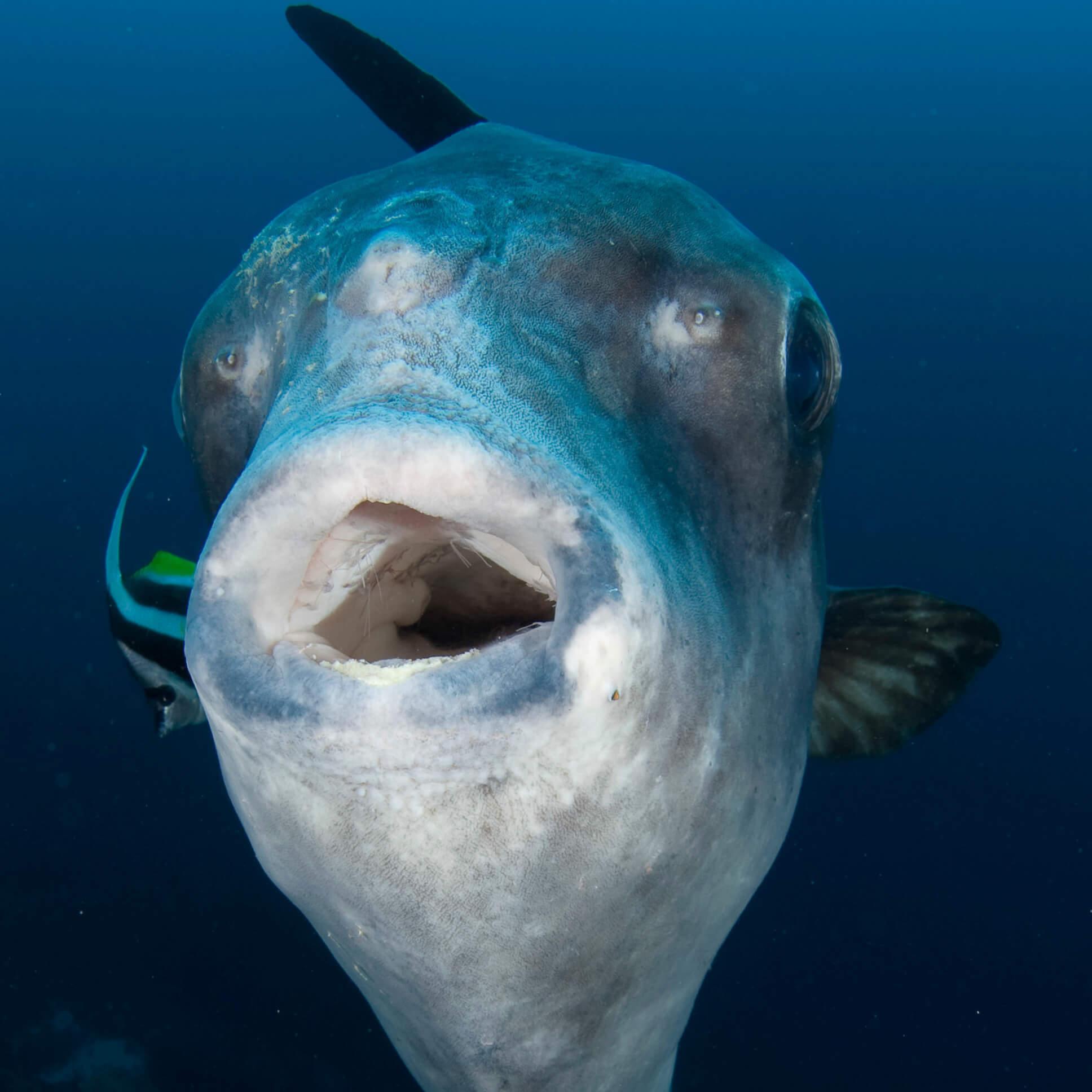
Do they like cold water?
The mola season is also known for its impressive thermoclines, where warmer water suddenly gives way to cold water in what are known as 'thermoclines'. The cold water comes from seasonal upwellings from the Indian Ocean and are most obvious around the southern coast of Nusa Penida. The temperatures during the mola season along the south coast of Nusa Penida are frequently a brisk 16-17C, with occasional dips as low as 13-14C! The northern coast of Nusa Penida however, stays relatively warmer during the mola season, with surface tempertaures of approximatley 24-28C.
The Bali molas are anecdotally thought to be attracted by this seasonally cold water - only coming into the local reefs when the cold water is pushed up into surface waters - however, accounts of sightings by divers as far as Bali’s warm north-west coast, and occasional sightings in the warmer months, outside of the mola season, are also quite common. This raises questions about the relationship between the Bali molas and the seasonal cold water upwelling, and where the molas might be during 'off season'. Are they resident all year, but stay away from the reefs during the warm 'off season' months, or do they migrate to other, colder areas?
To better understand the association between these sunfish on Bali’s reefs and the temperature changes throughout the year, an array of underwater temperature logging devices have been recording the water temperature around the Nusa Penida islands since 2013 - an vital part of the Bali Ocean Sunfish Research Project.
Match My Mola!
Using the Match My Mola! sunfish photo submission form, citizen scientists can add to the growing Bali Sunfish Photo Identification Catalogue. This catalogue was started in 2013 and the data collected has proved vital for species identification, identifying and recognising individuals and assessing injury rates.
An individual sunfish can be identified by its unique skin patterns on its side, so the research project is primarily looking for:
- Side-on images/footage taken as parallel to the camera as possible;
- Images/footage from either or both sides;
- Images/footage with no/few obstructions such as bubbles, cleaner fish or shadows;
- Images/footage sufficiently clear to see the skin patterns;
- Original images with no manipulation, in any format and the higher resolution the better.
If you would like to submit an image of a Bali sunfish, visit Match My Mola!
The Mola Log
As divers start to arrive for the busy high season in July-September, the number of sunfish sightings also increase. But is this just because there are suddenly more divers in the water? Part of the Ocean Sunfish Research project is developing a way of comparing the relative number of sunfish sighted between months, and between seasons, irrespective of the number of divers around to spot them.
This long term data set will also be able to give insights into sunfish aggregations in relation to oceanographic phenomena, such as El Nino events. The basis of this research is recording dives - lots of them- every day, throughout the year. Participating dive centers and individuals fill out a daily log that has been dubbed The Mola Log, and with this consistent information a statistical study can be performed. The research project is always looking for long-term contributors, so if you are interested, please visit Mola Log.
Mola and manta diving code of conduct
To keep the impact of so many visiting divers to a minimum, a code of conduct for diving with sunfish and manta rays was developed back to the early 2000's, when sunfish experts, scientific researchers, experienced local marine managers, industry representatives and dive guides operating in the area agreed on a set of simple, effective rules. The guidelines were designed to provide safer and better quality interactions for divers while ensuring the least impact on the sunfish population of Bali. These voluntary guidelines were eventually adopted by the MPA and made an official part of the park regulations by the Klungkung District Government.
You can find out more about and stay up to date with all things sunfish by liking the Bali Ocean Sunfish Research Project Facebook page.
Images courtesy of Scubazoo.
